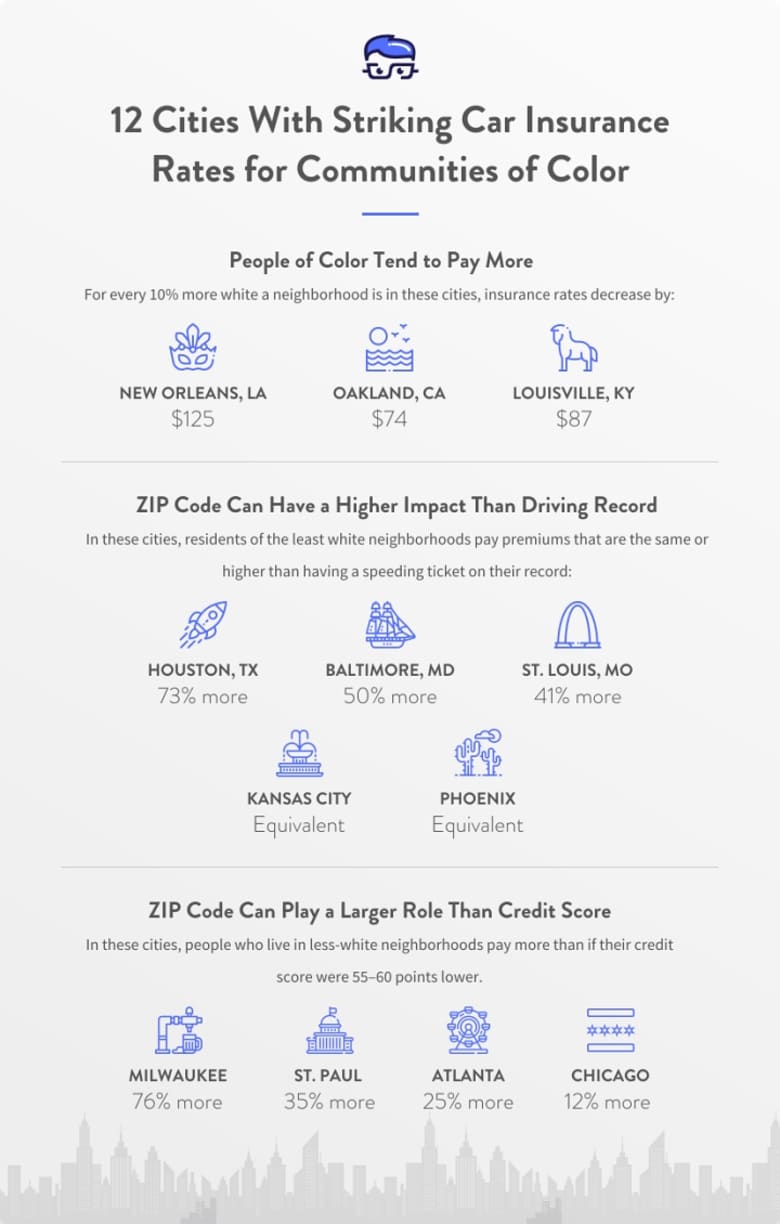Structural inequality in America often financially penalizes communities of color. Across the country, many Black and Latino citizens pay more for services and expenses, including home loans, property taxes and even car insurance, based on location.
To learn more about how disparities in car insurance costs impact people of color, MoneyGeek analyzed 1,648 ZIP codes in 69 cities across the U.S., comparing demographics and auto insurance premiums. The study found that drivers living in predominantly white ZIP codes often pay less for car insurance than people living in the same cities in ZIP codes with a lower proportion of white residents.
Among 69 cities with more than 10 ZIP codes available for analysis, 52 (75%) have a negative correlation (stronger than -0.60) between auto premiums and the percentage of white people in a ZIP code. Much like temperatures drop as elevation increases, car insurance prices fall as the ZIP code’s proportion of white residents increases.















